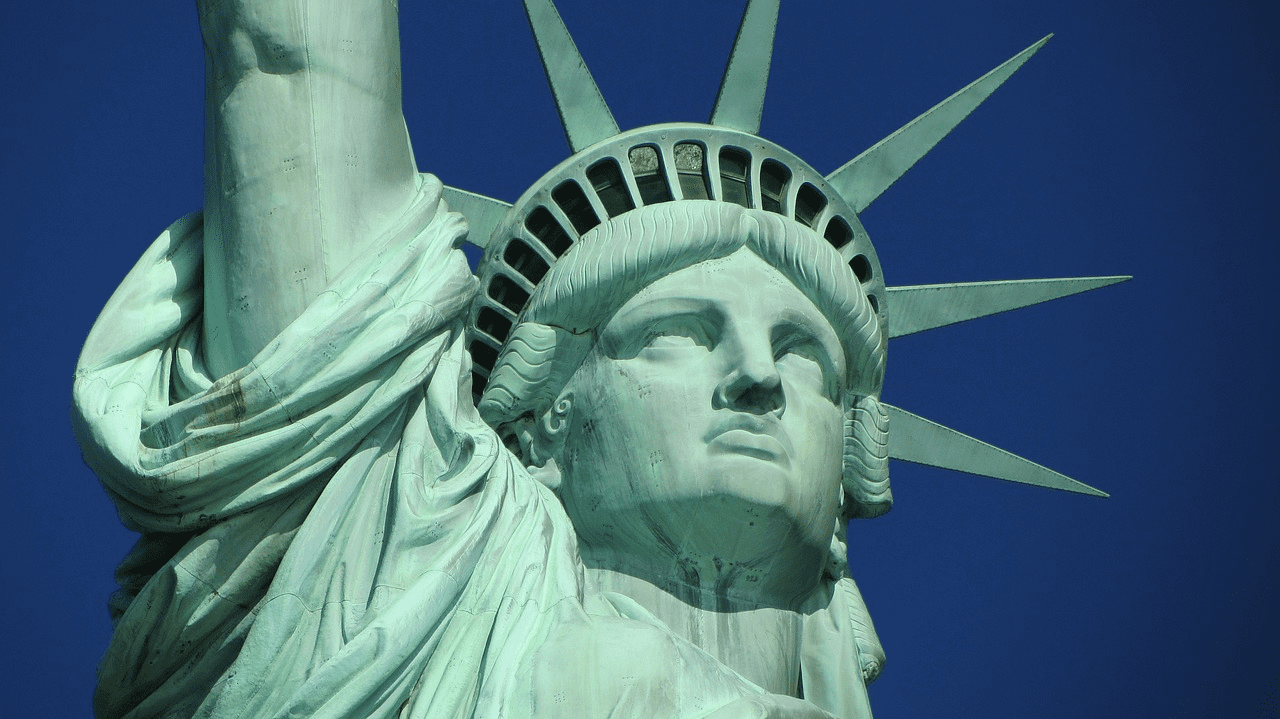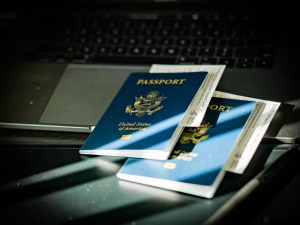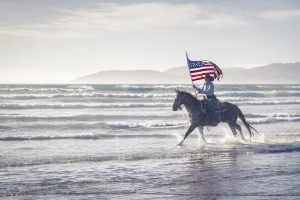The United States covers a massive 9.8 million square kilometres – that’s over three times the size of India. With such vastness, knowing how to move around becomes crucial for any Indian tourist.
Transportation in US combines high-tech systems with practical services designed for different budgets and needs. From iconic yellow taxis in Manhattan to San Francisco’s historic cable cars, each transport mode offers a unique way to experience American life. This guide breaks down everything you need to know about getting around the US, operating hours, and practical tips for Indian travellers.
Suggested Read: USA Visa for Indians
1. Buses

Buses form the backbone of public transportation in USA, operating in virtually every city and town across the country. They range from sleek, modern vehicles in major cities to smaller shuttles in rural areas. City buses serve local routes while companies like Greyhound and Megabus handle longer journeys between states.
Highlights
-
Pacific Coast Highway route offers stunning ocean views from Los Angeles to San Francisco, with stops at coastal towns like Santa Barbara
-
Grand Canyon shuttles provide access to viewpoints along the South Rim with narrated tours explaining geological features
-
Boston’s Freedom Trail buses connect 16 historic Revolutionary War sites, including Paul Revere’s house and Bunker Hill
-
Miami’s South Beach routes showcase the largest collection of Art Deco architecture in America, with over 800 preserved buildings
Key Routes
-
New York City to Washington, DC (4-5 hours, Megabus/Greyhound)
-
Los Angeles to Las Vegas (5-6 hours, multiple companies)
-
Chicago to Milwaukee (1.5 hours, frequent service)
-
San Francisco to Yosemite National Park (4 hours, seasonal services)
Cost
-
City bus fares typically range from $1.50 to $3.00 per ride
-
Day passes cost $5-10 in most cities (best value for tourists)
-
Intercity buses start at $15-60, depending on distance and advance booking
-
Reloadable cards available in most cities (MetroCard in NYC, TAP in LA, etc.)
Operating Hours
-
Weekdays: Most city buses operate from 5:00 AM to midnight
-
Weekends: Reduced hours, typically 6:00 AM to 10:00 PM
-
Frequency: Every 10-30 minutes in major cities, hourly in smaller towns
-
Holiday schedules often follow Sunday timetables with reduced service
Pro Tips
-
Download the transit app for your destination city before arrival for real-time tracking
-
Sit near the front for better views and easier communication with drivers
-
Flag down buses at designated stops—they don’t automatically stop at every station
-
Purchase intercity tickets online at least 2-3 weeks ahead for discounts up to 50%
Suggested Read: 24 Must-Visit Museums in USA
2. Amtrak

Source: wikipedia
Amtrak provides the primary rail service for long-distance travel across America. As the national passenger railroad, it connects over 500 destinations across 46 states with routes ranging from 3-hour city hops to multi-day cross-country journeys.
Highlights
-
California Zephyr crosses the Continental Divide through the Rocky Mountains with glass-domed observation cars
-
Coast Starlight runs along the Pacific shoreline from Seattle to Los Angeles with stunning ocean views
-
Empire Builder traverses Glacier National Park in Montana with some of America’s most dramatic mountain scenery
-
Crescent route passes historic Civil War battlefields between New York and New Orleans
Key Routes
-
Northeast Corridor (Boston-New York-Washington DC, most frequent service)
-
California Zephyr (Chicago to San Francisco, 51 hours across the continent)
-
Empire Builder (Chicago to Seattle/Portland, through northern states)
-
Auto Train (Virginia to Florida, carries passengers and their vehicles)
Cost
-
Short routes (3-5 hours): $29-89 one-way (e.g., New York to Washington DC)
-
Long-distance routes: $120-350 for coach seats (Chicago to Los Angeles)
-
Sleeping accommodations: Add $200-600 per night depending on room type
-
USA Rail Pass: $499 for 10 segments within 30 days (good for extensive travel)
Operating Hours
-
Weekdays: Long-distance trains operate daily, departing at scheduled times
-
Weekends: Same schedules as weekdays for most routes
-
Frequency: Northeast Corridor trains run every 30-60 minutes
-
Long-distance routes typically operate once daily in each direction
Pro Tips
-
Book sleeping compartments if traveling overnight—they include all meals
-
Lower-level seats offer more stability and less sway on long journeys
-
Pack food and snacks as dining car prices are relatively high
-
Download movies or shows before boarding as Wi-Fi can be unreliable
Suggested Read: USA Visa Photo Requirements for Indians
3. Trains

Beyond Amtrak, commuter trains serve metropolitan regions throughout America. These systems primarily connect suburbs to city centers and are essential for daily commuters and tourists wanting to explore beyond downtown areas.
Highlights
-
Metro-North Railroad offers scenic Hudson River views on routes north of New York City
-
Caltrain’s Baby Bullet service speeds through Silicon Valley past tech campuses like Google and Facebook
-
Chicago’s Metra Electric provides front-row views of the city skyline from Lake Michigan
-
MBTA Purple Line in Boston passes through historic towns like Salem, famous for its witch trials
Key Routes
-
Metro-North: New York City to Connecticut suburbs and upstate New York
-
Caltrain: San Francisco to San Jose through Silicon Valley
-
Metra: Chicago to suburbs in all directions (11 lines)
-
MBTA Commuter Rail: Boston to surrounding Massachusetts communities
Cost
-
Single rides typically range from $2.25 to $12.50 depending on distance
-
Day passes available in most systems ($15-25)
-
Monthly passes for extended stays ($75-350 depending on zones)
-
Senior and student discounts typically 50% off regular fares
Operating Hours
-
Weekdays: 5:00 AM to midnight (most frequent service during rush hours)
-
Weekends: 6:00 AM to 11:00 PM with reduced frequency
-
Frequency: Every 15-30 minutes during peak hours; hourly during off-peak
-
Holiday service follows Sunday schedules with possible reductions
Pro Tips
-
Position yourself at the correct zone on platforms—trains can be very long
-
Check for express trains that skip smaller stations to save time
-
Keep tickets accessible as random inspections occur on most systems
-
Some commuter rail systems don’t run on holidays or have very limited service
Suggested Read: Temples in USA | Sacred Architectural Marvels
4. Taxis

Taxis and rideshare services represent the most flexible form of private transportation in USA. Traditional yellow cabs remain common in cities, while Uber and Lyft have revolutionized transportation services in USA with their mobile apps and often lower prices.
Highlights
-
Manhattan’s iconic yellow taxis provide classic New York experiences featured in countless movies
-
Las Vegas Strip lighting displays are best viewed from rideshare vehicles at night
-
Miami’s art districts like Wynwood Walls are easily accessible via Uber with drivers who often give insider tips
-
San Francisco’s historic neighborhoods and steep hills are navigable with knowledgeable local taxi drivers
Key Routes
-
Airport to downtown in major cities (typical distance 10-20 miles)
-
Hotel areas to tourist attractions and entertainment districts
-
Late-night transportation when public transit is limited
-
Trips to residential areas where bus/train service is infrequent
Cost
-
Taxis: $3.00-4.50 base fare plus $2.00-3.00 per mile (15-20% tip expected)
-
Uber/Lyft standard rides: $8-15 for short trips, $25-50 for airport transfers
-
Airport surcharges: Additional $3-5 for both taxis and rideshares
-
Surge pricing: Rates increase 1.5-3x during peak demand periods
Operating Hours
-
Weekdays: 24/7 availability in major cities; limited overnight in smaller areas
-
Weekends: 24/7 in tourist areas with increased availability during evenings
-
Frequency: Immediate booking in urban areas; 5-15 minute waits in suburbs
-
Rural areas may have limited or no service, especially for rideshares
Pro Tips
-
Use airport taxi stands rather than hailing on street to avoid scams
-
Compare prices between Uber and Lyft as they often differ significantly
-
Schedule airport pickups in advance for early morning flights
-
Save frequent destinations in rideshare apps to avoid explaining directions
Suggested Read: USA Visa Extension for Indians
5. Subways and Metro Systems

Source: wikipedia
Subway and metro systems represent the fastest form of local transportation in USA within major cities. These underground and elevated rail networks move millions of passengers daily, bypassing street congestion.
Highlights
-
New York’s subway art program features over 300 installations, making stations virtual galleries
-
Washington DC’s Metro stations have distinctive vaulted ceilings designed by architect Harry Weese
-
Chicago’s elevated “L” trains offer panoramic views of downtown skyscrapers
-
Atlanta’s MARTA provides direct access to Hartsfield-Jackson Airport, the world’s busiest
Key Routes
-
NYC Subway: Times Square to Central Park on the N/Q/R lines
-
Washington Metro: National Mall loop connects Smithsonian museums
-
Chicago “L”: Loop circuit passes architectural landmarks
-
San Francisco BART: Downtown to Mission District for cultural exploration
Cost
-
Single rides: $2.25-3.25 depending on the city
-
Day passes: $9-13 for unlimited rides (best value for tourists)
-
Weekly passes: $33-40 (economical for stays longer than 3 days)
-
Airport surcharges: Some systems charge premium fares from airports ($5-7.75)
Operating Hours
-
Weekdays: 5:00 AM to 1:00 AM (NYC runs 24/7)
-
Weekends: 5:30 AM to 2:00 AM with possible extended late-night service
-
Frequency: Every 3-8 minutes during peak hours; 10-20 minutes off-peak
-
Express trains operate on some lines during rush hours, skipping local stops
Pro Tips
-
Stand to the right on escalators so locals can walk past on the left
-
Keep your ticket or card until exiting—many systems require it to leave
-
Avoid rush hours (7:30-9:30 AM and 4:30-6:30 PM) when trains are packed
-
Download official transit apps that show real-time train arrivals and service changes
Suggested Read: Spring in USA | Weather Guide, Must-Visit Places & Essential Travel Tips
6. Monorails and Tramways

Specialized rail systems like monorails and tramways offer unique perspectives and often serve as tourist transportation in USA. These systems typically operate in specific corridors or tourist areas rather than covering entire cities.
Highlights
-
Las Vegas Monorail provides aerial views of the Strip’s famous casino resorts
-
Seattle Center Monorail passes directly through the Museum of Pop Culture building
-
Portland’s streetcar crosses the modern Tilikum Crossing bridge, which bans private cars
-
San Francisco’s historic cable cars climb the city’s steepest hills with panoramic bay views
Key Routes
-
Las Vegas Monorail: MGM Grand to Sahara Avenue (4 miles along the Strip)
-
Seattle Monorail: Westlake Center to Seattle Center/Space Needle
-
Portland Streetcar: Pearl District to South Waterfront
-
San Francisco Cable Cars: Powell-Hyde line from Union Square to Fisherman’s Wharf
Cost
-
Single rides: $3-8 depending on system
-
Day passes: $13-25 for unlimited rides
-
Multi-day tourist passes often include these special systems
-
San Francisco cable cars: $8 per ride (highest fare of any public transit in America)
Operating Hours
-
Weekdays: Typically 7:00 AM to 11:00 PM or midnight
-
Weekends: Extended hours in tourist areas (often until 1:00-2:00 AM)
-
Frequency: Every 5-15 minutes throughout operating hours
-
Seasonal adjustments with extended summer hours in many locations
Pro Tips
-
Board San Francisco cable cars at turnaround points to avoid long mid-route queues
-
Sit on the west side of Las Vegas Monorail for the best Strip views
-
Many systems offer discounts when purchased alongside other tourist attractions
-
Some historic tramways don’t accept contactless payment—bring small bills
Suggested Read: USA Visa Rejection for Indians
7. Water Taxi

Water taxis provide scenic transportation along coastlines, rivers, and harbors in port cities. These vessels range from small boats to larger ferries and offer some of the best views of city skylines.
Highlights
-
New York Water Taxi passes directly under the Brooklyn Bridge with Manhattan skyline views
-
Seattle’s King County Water Taxi crosses Elliott Bay with Olympic Mountain backdrops
-
Boston Harbor ferries pass historic sites like Old North Church and USS Constitution
-
Fort Lauderdale’s water taxis navigate the “American Venice” with views of mansion homes
Key Routes
-
NYC: East River route connecting Manhattan, Brooklyn, and Queens
-
Seattle: Downtown to West Seattle and Vashon Island
-
San Francisco: Ferry Building to Sausalito and Alcatraz Island
-
Chicago: Riverwalk water taxi connecting major downtown attractions
Cost
-
Single rides: $3-14 depending on distance
-
Day passes: $20-35 for unlimited rides
-
Tourist passes often include water taxi options
-
Discounts for seniors (typically 50%) and children (typically free under 5)
Operating Hours
-
Weekdays: Usually 7:00 AM to 7:00 PM
-
Weekends: Extended hours in summer (often until 9:00-10:00 PM)
-
Frequency: Every 15-60 minutes, depending on route
-
Seasonal operation in northern cities (reduced or suspended in winter)
Pro Tips
-
Sit outside for photos, but bring a jacket—it’s always cooler on the water
-
Check weather forecast,s as services often cancel during high winds or fog
-
Many water taxis allow bicycles onboard for combined transportation
-
Buy tickets online to avoid queues at popular departure points
Suggested Read: Exploring the USA on a Budget: A Complete Guide
Why Choose OneVasco?
OneVasco makes visa applications effortless. Our expert team manages the entire process, allowing you to focus on your journey. Enjoy stress-free travel with fast visa approvals.
-
Expert and Personalized Support
-
Efficient and Hassle-Free Process
-
Real-Time Tracking and Updates
-
Transparent Communication
-
Trusted by Millions
FAQs
What is the best way to get around the USA?
The best way depends on your location and needs. In major cities like New York, Chicago, and San Francisco, public transportation in the USA is excellent. For travel between cities, flights are fastest, while Amtrak trains offer scenic routes. Renting a car provides the most flexibility outside urban centers.
What is the main transportation in the USA?
Private cars remain the dominant form of transportation in the USA, with about 85% of Americans commuting by car. However, major cities have extensive public transit networks, including buses, subways, and light rail systems that serve millions daily.
What is the cheapest way of transport in the USA?
City buses represent the most affordable transportation in the USA, with fares typically $1.50-3.00. For intercity travel, budget buses like Megabus and Flixbus offer fares starting around $10-20 if booked well in advance. Subway systems provide good value with unlimited day passes around $10.
Is a taxi expensive in the USA?
Yes, taxis tend to be the priciest form of transportation in the USA. Expect to pay $15-25 for even short rides in major cities, plus a 15-20% tip. Airport transfers often exceed $50. Rideshare services like Uber and Lyft typically cost 20-30% less than traditional taxis.
Can tourists use the USA Metro?
Absolutely! All subway and metro systems welcome tourists and offer single-ride tickets or visitor passes. No special documentation is required, and ticket machines have English instructions. Many transit systems now offer contactless payment, accepting international credit cards.
What currency is used in the USA?
The United States Dollar (USD or $) is the official currency. As of 2023, $1 equals approximately ₹83. Credit cards are widely accepted for transportation in the USA, though some buses require exact change in cash.
Are taxis in the USA expensive?
Yes, taxis represent one of the more expensive transportation options. A 3-mile taxi ride typically costs $12-20, depending on the city, plus a customary 15-20% tip. Airport transportation in the USA via taxi is particularly costly, often $35-70 from major airports to downtown areas.
Are buses cheap in the USA?
City buses provide the cheapest transportation in the USA, with single rides costing $1.50-3.00. Intercity buses like Greyhound and Megabus offer competitive fares starting around $15-30 for shorter routes when booked in advance. Weekly bus passes in major cities typically cost $25-35 for unlimited rides.





















